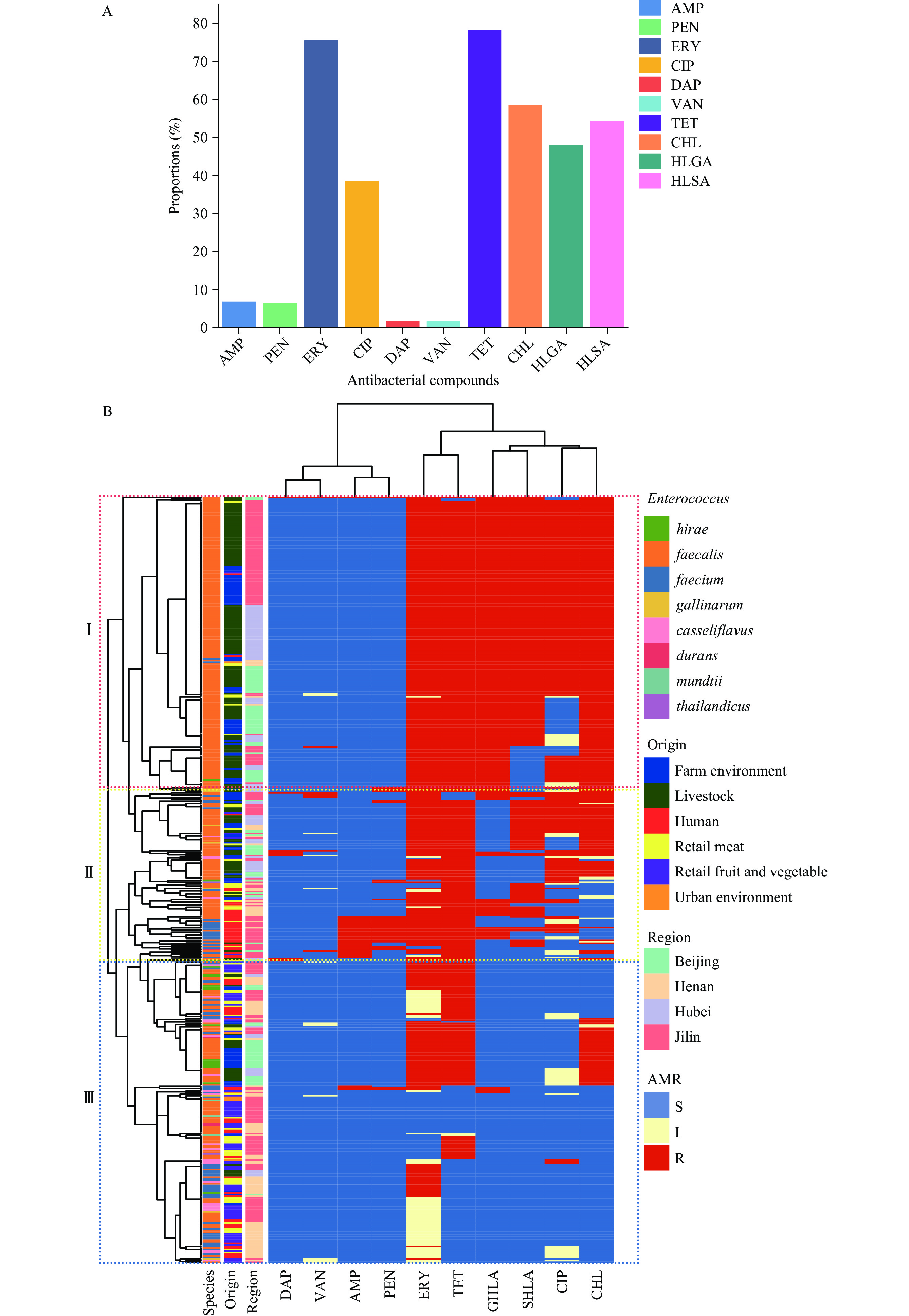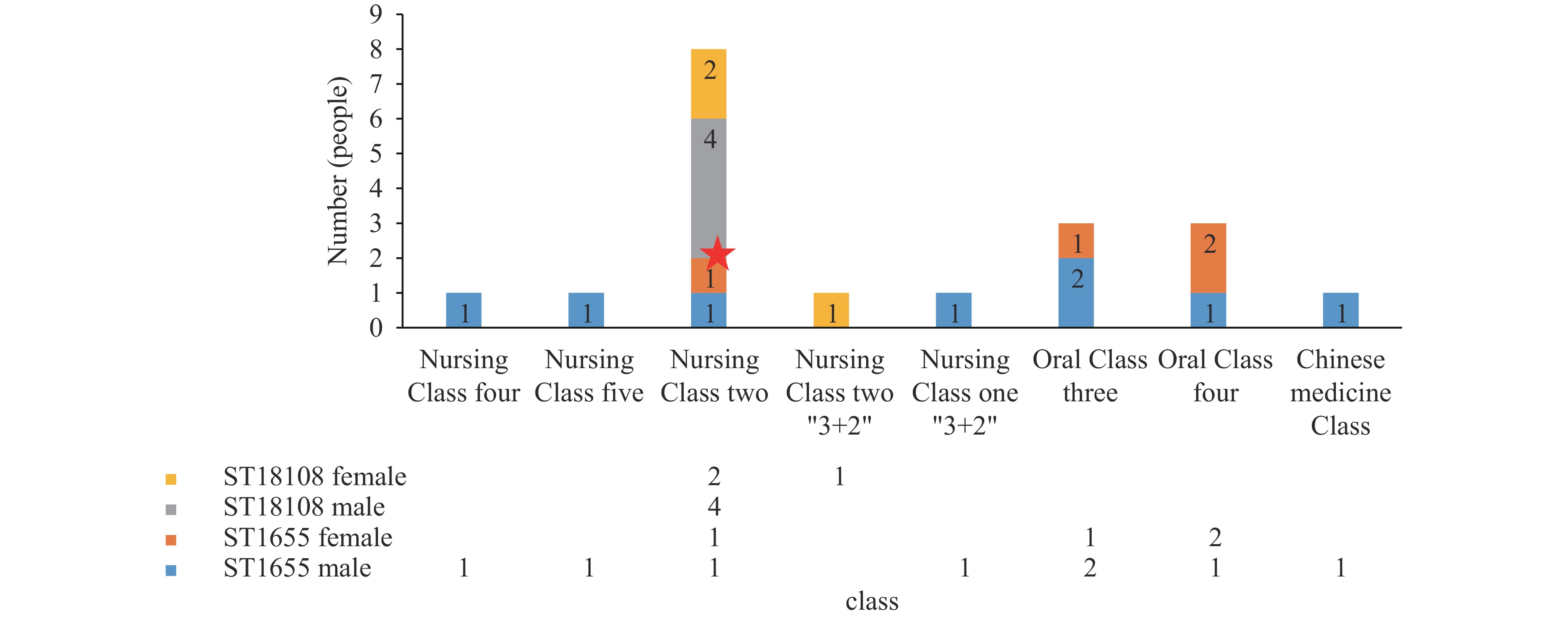2024 Vol. 6, No. 47
Enterococci are considered opportunistic pathogens. However, they can serve as a reservoir of antibacterial resistance (ABR) traits and transfer these to humans through the food chain.
Antibiotic susceptibility testing and multilocus sequence typing were used to characterize the ABR and population structure of 488 enterococcal isolates recovered along the food chain from four provincial-level administrative divisions (PLADs) in China.
Enterococcus faecalis (E. faecalis) was the dominant species cultured from pig farms and retail meat, while Enterococcus faecium (E. faecium) and Enterococcus casseliflavus were dominant in patients with diarrhea and retail fruits and vegetables, respectively. Approximately 67% of all Enterococcus isolates were multidrug-resistant (MDR). E. faecium resistance to ampicillin and penicillin was significantly higher than that of E. faecalis. The E. faecalis isolates exhibited substantially heterologous sequence types (STs), whereas E. faecium isolates were clearly divided into clonal complex (CC) CC17 and CC94 clades. E. faecium isolates were mainly detected in hospitalized children and were identified as the hospital-associated CC17 clade with ampicillin and penicillin resistance. Notably, E. faecalis ST16 and ST65 and E. faecium ST60 and ST94 detected in patients with diarrhea were also detected in farm and food samples, indicating that these STs should be closely monitored. The community-lineage E. faecium CC94 clade was detected in patients with diarrhea, implying that community isolates might find their way into hospitals.
This study highlights the One Health challenges posed by enterococci important to human health and the need to implement integrated preventive measures for their control.
Salmonella enterica is a significant foodborne pathogen responsible for millions of infections and thousands of deaths worldwide each year. The increasing prevalence of the ST34 Salmonella enterica serotype 4,5,12:i:-(S. 4,[5],12:i:-) poses a substantial public health threat in China.
At the end of 2023, the TraNet early-warning module, utilizing whole-genome sequencing data, identified a newly regionally prevalent sequence type of S. 4,[5],12:i:-, designated ST8333, primarily found in Sichuan Province. Analysis revealed high rates of antimicrobial resistance genes, particularly to aminoglycosides and β-lactams. Plasmid comparisons suggest that ST8333 isolates acquired multidrug-resistance plasmids of swine origin during their distribution in Sichuan Province.
The emergence of ST8333, likely associated with pork consumption, underscores the importance of food safety measures. The high prevalence of multidrug resistance poses challenges for treatment and highlights the need for vigilant surveillance and control measures. Strengthening efforts in regions like Sichuan, identified as a reservoir for multidrug-resistant ST8333 strains, is crucial to prevent further transmission and potential nationwide dissemination. Surveillance and control measures are imperative to curb the spread of multidrug-resistant ST8333 isolates, particularly in high-prevalence regions.
The emergence of rare multidrug-resistant Salmonella serovars is increasingly common in developing countries, posing a significant public health risk.
This report identified five rare Salmonella serovars in China for the first time and using whole-genome sequencing, identified their hidden spread among healthy individuals. Additionally, antibiotic resistance genes and virulence genes were identified.
Healthy individuals, especially food handlers, may be sources of hidden Salmonella dissemination. Therefore, monitoring Salmonella prevalence in healthy individuals is important for understanding and managing the risks of foodborne illness.
Neisseria meningitidis (Nm) is a bacterial pathogen that causes meningococcal disease. Serogroups A, B, C, W, X, and Y account for the vast majority of cases. However, invasive meningococcal disease (IMD) caused by NmY is rare in China and has been reported only in Tianjin, Guangdong, Shanghai, and Hunan provinces and cities.
This article reports the first case of NmY:cc23 meningococcal disease in Hebei Province, confirmed by metagenomic sequencing. We also present the results of expanded surveillance in the healthy population associated with the case.
NmY has caused multiple case reports across China, especially in southern cities. The first report of a serogroup Y case in Hebei Province, and the carriage rate in the healthy population, reminds us to increase public health attention on Nm. The results of this study suggest that surveillance of the Nm carriage rate among healthy carriers and serogroup changes in Nm should be strengthened.



 Subscribe for E-mail Alerts
Subscribe for E-mail Alerts CCDC Weekly RSS Feed
CCDC Weekly RSS Feed


